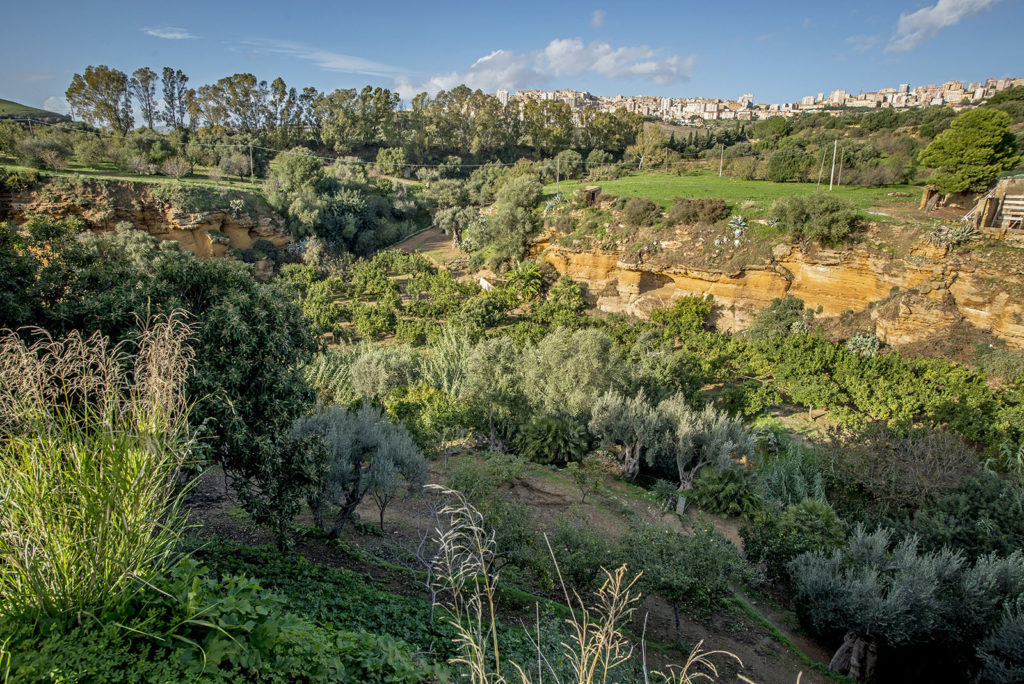In 2001 the Italian Environment Fund began work to salvage this lush area of plants and flowers, so that today the Kolymbetra Garden is rich in vegetation so varied that it accommodates types of citrus groves that were there in medieval times.
The highest parts of the valley are home to the typical plants of the Maquis shrubland: myrtle, mastic, broom, dwarf palm and many more. Their delicious scents sweeten the surrounding air and give wonderful colourful compositions reminiscent of Sicily’s warmth.
Towards the steepest part of the valley, on the other hand, where the water from the ancient feaci irrigation systems arrives, there are poplars and salt cedars, as well as a wonderful
citrus grove
with different varieties of mandarins, oranges and lemons.

The garden is also full of typical species such as prickly pear,
almond
, mulberry, carob and giant
Saracen olive trees
. In another area there is a garden for the seasonal cultivation of aubergines, cabbage, peppers, tomatoes and courgettes.